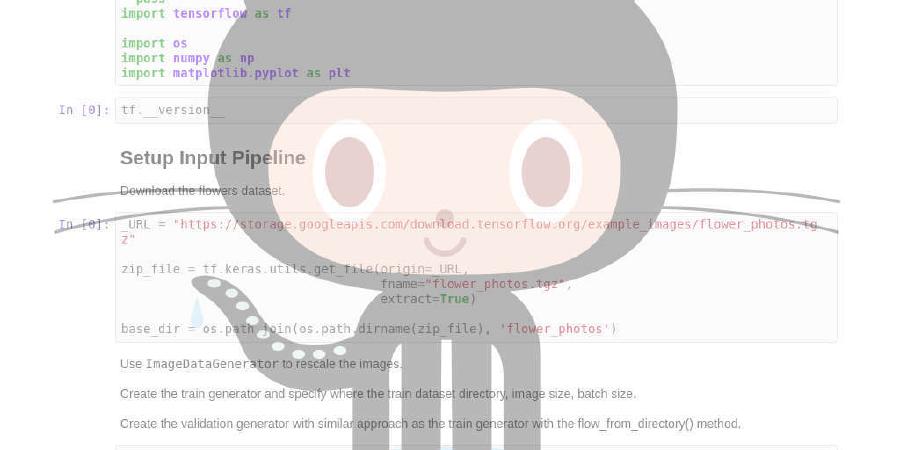tamarott/SinGAN

Official pytorch implementation of the paper: “SinGAN: Learning a Generative Model from a Single Natural Image”
| repo name | tamarott/SinGAN |
| repo link | https://github.com/tamarott/SinGAN |
| homepage | http://webee.technion.ac.il/people/tomermic/SinGAN/SinGAN.htm |
| language | Python |
| size (curr.) | 97159 kB |
| stars (curr.) | 2238 |
| created | 2019-08-17 |
| license | Other |
SinGAN
Official pytorch implementation of the paper: “SinGAN: Learning a Generative Model from a Single Natural Image”
ICCV 2019
Random samples from a single image
With SinGAN, you can train a generative model from a single natural image, and then generate random samples form the given image, for example:
SinGAN’s applications
SinGAN can be also use to a line of image manipulation task, for example:
This is done by injecting an image to the already trained model. See section 4 in our paper for more details.
Citation
If you use this code for your research, please cite our paper:
@inproceedings{rottshaham2019singan,
title={SinGAN: Learning a Generative Model from a Single Natural Image},
author={Rott Shaham, Tamar and Dekel, Tali and Michaeli, Tomer},
booktitle={Computer Vision (ICCV), IEEE International Conference on},
year={2019}
}
Code
Install dependencies
python -m pip install -r requirements.txt
This code was tested with python 3.6
Train
To train SinGAN model on your own image, put the desire training image under Input/Images, and run
python main_train.py --input_name <input_file_name>
This will also use the resulting trained model to generate random samples starting from the coarsest scale (n=0).
To run this code on a cpu machine, specify --not_cuda when calling main_train.py
Random samples
To generate random samples from any starting generation scale, please first train SinGAN model for the desire image (as described above), then run
python random_samples.py --input_name <training_image_file_name> --mode random_samples --gen_start_scale <generation start scale number>
pay attention: for using the full model, specify the generation start scale to be 0, to start the generation from the second scale, specify it to be 1, and so on.
Random samples of arbitrery sizes
To generate random samples of arbitrery sizes, please first train SinGAN model for the desire image (as described above), then run
python random_samples.py --input_name <training_image_file_name> --mode random_samples_arbitrary_sizes --scale_h <horizontal scaling factor> --scale_v <vertical scaling factor>
Animation from a single image
To generate short animation from a single image, run
python animation.py --input_name <input_file_name>
This will automatically start a new training phase with noise padding mode.
Harmonization
To harmonize a pasted object into an image (See example in Fig. 13 in our paper), please first train SinGAN model for the desire background image (as described above), then save the naively pasted reference image and it’s binary mask under “Input/Harmonization” (see saved images for an example). Run the command
python harmonization.py --input_name <training_image_file_name> --ref_name <naively_pasted_reference_image_file_name> --harmonization_start_scale <scale to inject>
Please note that different injection scale will produce different harmonization effects. The coarsest injection scale equals 1.
Editing
To edit an image, (See example in Fig. 12 in our paper), please first train SinGAN model on the desire non-edited image (as described above), then save the naive edit as a reference image under “Input/Editing” with a corresponding binary map (see saved images for an example). Run the command
python editing.py --input_name <training_image_file_name> --ref_name <edited_image_file_name> --editing_start_scale <scale to inject>
both the masked and unmasked output will be saved. Here as well, different injection scale will produce different editing effects. The coarsest injection scale equals 1.
Paint to Image
To transfer a paint into a realistic image (See example in Fig. 11 in our paper), please first train SinGAN model on the desire image (as described above), then save your paint under “Input/Paint”, and run the command
python paint2image.py --input_name <training_image_file_name> --ref_name <paint_image_file_name> --paint_start_scale <scale to inject>
Here as well, different injection scale will produce different editing effects. The coarsest injection scale equals 1.
Advanced option: Specify quantization_flag to be True, to re-train only the injection level of the model, to get a on a color-quantized version of upsamled generated images from previous scale. For some images, this might lead to more realistic results.
Super Resolution
To super resolve an image, please run:
python SR.py --input_name <LR_image_file_name>
This will automatically train a SinGAN model correspond to 4x upsampling factor (if not exist already).
For different SR factors, please specify it using the parametr --sr_factor when calling the function.
SinGAN’s results on BSD100 dataset can be download from the ‘Downloads’ folder.
Additional Data and Functions
Single Image Fréchet Inception Distance (SIFID score)
To calculate the SIFID between real images and their corresponding fake samples, please run:
python SIFID/sifid_score.py --path2real <real images path> --path2fake <fake images path>
Make sure that each of the fake images file name is identical to its cooresponding real image file name. Images should be saved in .jpg format.
Super Resolution Results
SinGAN’s SR results on BSD100 dataset can be download from the ‘Downloads’ folder.
User Study
The data used for the user study can be found in the Downloads folder.
real folder: 50 real images, randomly picked from the places databas
fake_high_variance folder: random samples starting from n=N for each of the real images
fake_mid_variance folder: random samples starting from n=N-1 for each of the real images
For additional details please see section 3.1 in our paper




